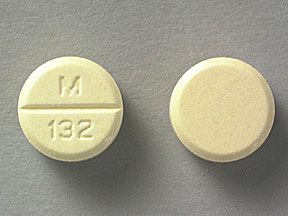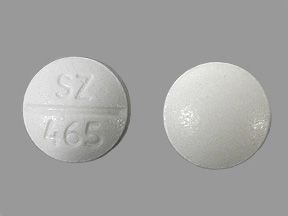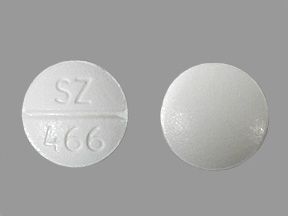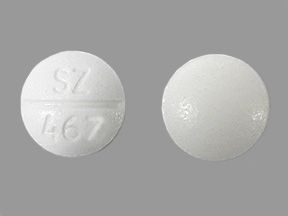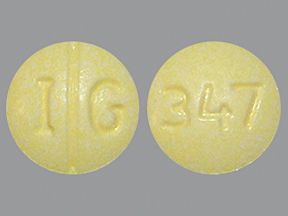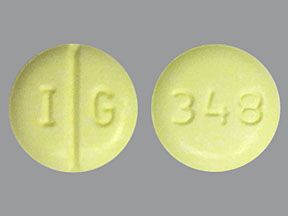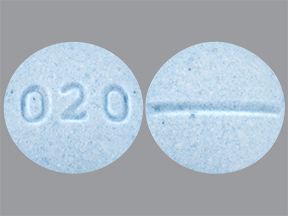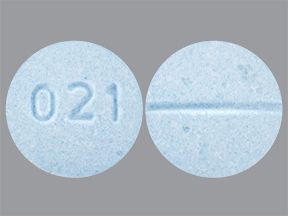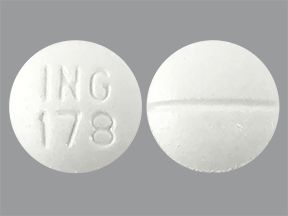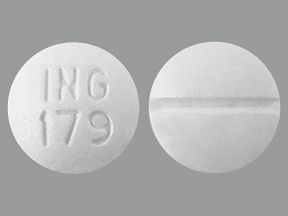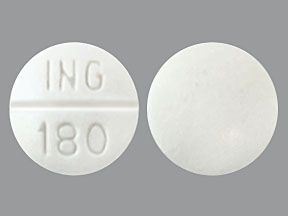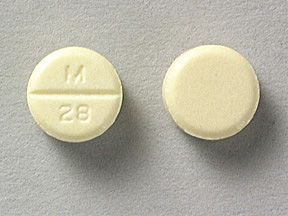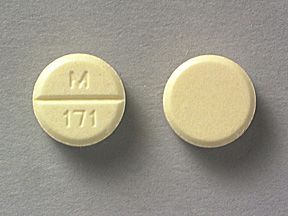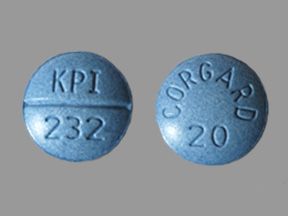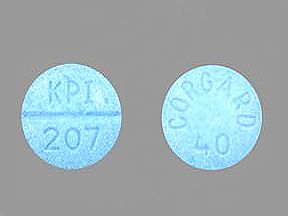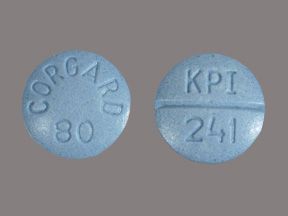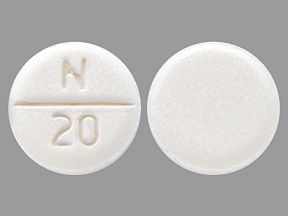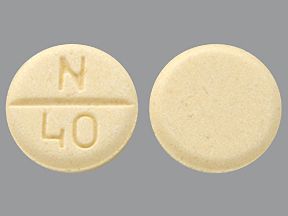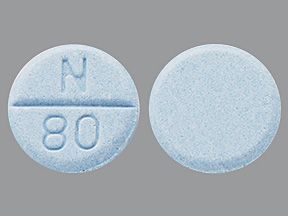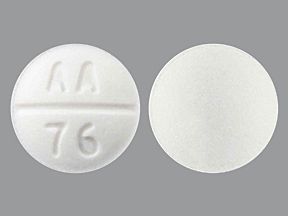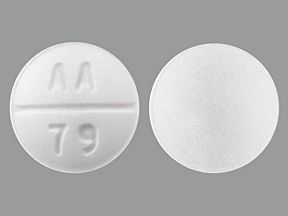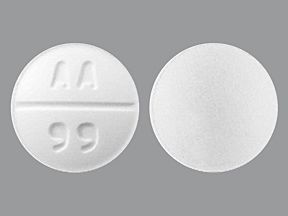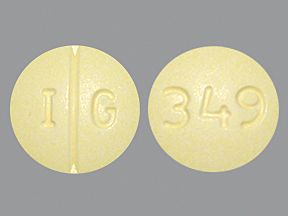Highlights for nadolol
- Nadolol oral tablet is available as a brand-name drug and a generic drug. Brand name: Corgard.
- Nadolol comes only as a tablet you take by mouth.
- Nadolol is used to treat hypertension (high blood pressure) and angina (chest pain).
FDA warning: Suddenly stopping this drug
- This drug has a black box warning. This is the most serious warning from the Food and Drug Administration (FDA). A black box warning alerts doctors and patients about drug effects that may be dangerous.
- Suddenly stopping treatment with nadolol can cause a heart attack, stroke, irregular heartbeat, or severe high blood pressure. Your doctor will decide if you need to stop taking nadolol. Your dosage will be slowly lowered over a 1- to 2-week period, and you’ll be carefully monitored by your doctor or nurse.
Other warnings
- Surgery warning: Tell your doctor if you’re having a major surgery. You may still take the drug, but taking it may increase your risks of low blood pressure and heart failure when receiving general anesthesia and having major surgery. Your doctor will decide if you should be slowly taken off nadolol before the surgery.
- Drug interactions warning: Many medications interact with nadolol. Don’t start or stop taking any medications (prescription or over-the-counter) without talking to your doctor or pharmacist. For instance, don’t take cough, cold, or pain medications before asking your doctor or pharmacist. Some ingredients in these medications can increase your blood pressure.
Nadolol is a prescription drug. It comes as an oral tablet.
Nadolol is available as the brand-name drug Corgard. It’s also available in a generic version. Generic drugs usually cost less than the brand-name version. In some cases, they may not be available in every strength or form as the brand-name drug.
This drug may be used as part of a combination therapy. That means you may need to take it with other drugs.
Why it’s used
Nadolol is used to treat hypertension (high blood pressure) and angina (chest pain) in people with high blood pressure, a previous heart attack, or heart failure.
How it works
Nadolol is in a class of medications called beta blockers. A class of drugs is a group of medications that work in a similar way. These drugs are often used to treat similar conditions.
Beta blockers work by lowering your heart rate and relaxing your blood vessels. This can lower your blood pressure, help your heart beat more regularly, and reduce chest pain.
Beta blockers don’t permanently change blood pressure and chest pain. Instead, they help to manage the symptoms.
Nadolol oral tablet may cause drowsiness or dizziness. Don’t drive, use heavy machinery, or do anything that requires being mentally alert until you know how it affects you.
This drug can also cause other side effects.
More common side effects
The more common side effects that can occur with nadolol include:
- dry, itchy skin
- headache
- change in sex drive or performance
Serious side effects
Call your doctor right away if you have serious side effects. Call 911 if your symptoms feel life-threatening or if you think you’re having a medical emergency. Serious side effects and their symptoms can include the following:
- allergic reactions, such as:
- skin rash
- itching
- hives
- tingling, numbness, or cold feeling in your hands or feet
- wheezing or trouble breathing
- irregular heart beat
- slow heart rate
- swelling of your ankles or legs
Disclaimer: Our goal is to provide you with the most relevant and current information. However, because drugs affect each person differently, we can not guarantee that this information includes all possible side effects. This information is not a substitute for medical advice. Always discuss possible side effects with a healthcare provider who knows your medical history.
Nadolol oral tablet can interact with other medications, vitamins, or herbs you may be taking. An interaction is when a substance changes the way a drug works. This can be harmful or prevent the drug from working well.
To help avoid interactions, your doctor should manage all of your medications carefully. Be sure to tell your doctor about all medications, vitamins, or herbs you’re taking. To find out how this drug might interact with something else you’re taking, talk to your doctor or pharmacist.
Examples of drugs that can cause interactions with nadolol are listed below.
Heart medications
Talk to your doctor about other medications you’re taking to control your blood pressure or heart rate. Starting, stopping, or taking other medications for blood pressure or heart rate with nadolol can cause serious side effects, such as rebound high blood pressure, heart failure, low blood pressure, slow heartbeat, or irregular heartbeat.
Examples of heart medications include:
- amiodarone
- clonidine
- digoxin
- diltiazem
- flecainide
- nifedipine
- propranolol
- sotalol
- verapamil
Diabetes medications
Nadolol may prevent your body from controlling your blood sugar levels. Tell your doctor if you’re taking medications for diabetes. Your doctor will monitor you more closely to see how your body responds to nadolol.
Examples of diabetes medication includes:
- glipizide
- glyburide
- metformin
- insulin
Asthma/COPD medications
Don’t take nadolol if you have asthma, chronic obstructive pulmonary disease (COPD), or any other chronic airway disease. Nadolol can prevent medications that treat these conditions from working as well as they should.
Examples of these drugs include:
- albuterol
- theophylline
- formoterol
- salmeterol
Mood disorder drug
Avoid taking haloperidol with nadolol. Taking these drugs together can cause your blood pressure to lower too much.
Migraine drugs
Avoid taking migraine drugs called ergot alkaloids with nadolol. Nadolol can increase the effect of ergot alkaloids in your body, causing less oxygen to go to your arms and legs.
Examples of ergot alkaloids include:
- ergotamine
- dihyrdoergotamine
- methylergonovine
- methysergide
Dementia drug
Avoid taking nadolol with rivastigmine, which is commonly used for Alzheimer’s disease. Taking these medications together can cause your heart rate to slow and possibly cause you to faint.
Allergy drug
Tell your doctor if you use epinephrine to treat allergic reactions. Treatment with nadolol may prevent your usual dose of epinephrine from working as well.
Nonsteroidal anti-inflammatory drugs (NSAIDs)
Tell your doctor if you’re using NSAIDs to treat pain or any other condition. Taking NSAIDs with nadolol can reduce the effect of nadolol in your body. This means it won’t control your blood pressure as it should.
Examples of NSAIDs include:
- ibuprofen
- naproxen
- indomethacin
- meloxicam
Disclaimer: Our goal is to provide you with the most relevant and current information. However, because drugs interact differently in each person, we can not guarantee that this information includes all possible interactions. This information is not a substitute for medical advice. Always speak with your healthcare provider about possible interactions with all prescription drugs, vitamins, herbs and supplements, and over-the-counter drugs that you are taking.
This drug comes with several warnings.
Allergy warning
Nadolol can cause a severe allergic reaction. Symptoms may include:
- trouble breathing
- swelling of your throat or tongue
- fever
If you develop these symptoms, call 911 or go to the nearest emergency room.
Don’t take this drug again if you’ve ever had an allergic reaction to it. Taking it again could be fatal (cause death).
Food interaction warning
Green tea may interfere with how well nadolol works in your body. You may need to decrease the amount of green tea you drink while taking nadolol.
Alcohol interaction warning
Consuming alcohol while taking nadolol can make you feel more dizzy or sleepy. Don’t drink alcoholic beverages while being treated with nadolol.
Warnings for people with certain health conditions
For people with heart failure: Don’t take nadolol if you have active congestive heart failure. Nadolol may make heart failure worse. If you don’t have a history of heart failure, your doctor may still treat you with nadolol, but you’ll be closely monitored for symptoms of heart failure.
For people with chronic airway disease: Don’t use nadolol if you have chronic bronchitis or emphysema. Nadolol may interfere with how well medications used to treat these conditions work.
For people with diabetes: You may not able to take nadolol if you have diabetes. Nadolol can cause your body to become less sensitive to low levels of blood sugar. This can hide the signs of low blood sugar, such as a fast heartbeat or changes in blood pressure. Nadolol can also decrease the amount of insulin your body releases if you have high blood sugar.
For people with thyroid disease: You may not be able to take nadolol if you have problems with your thyroid. Nadolol can hide the signs of too much thyroid hormone in your body, such as a fast heart rate.
For people with kidney disease: Your doctor may monitor you closely if you have kidney damage or kidney disease and are being treated with nadolol. They may also change your dosage of this drug.
For people with Raynaud’s phenomenon: Don’t use nadolol if you have Raynaud’s phenomenon or peripheral vascular disease (a disease affecting the blood vessels in your arms and legs). Taking nadolol if you have Raynaud’s or peripheral vascular disease can cause your heart not to work as well. This may cause the symptoms of Raynaud’s or peripheral vascular disease to get worse.
Warnings for other groups
For pregnant women: There are no studies of nadolol use in pregnant women. Tell your doctor if you’re pregnant or plan to become pregnant. Nadolol should only be used during pregnancy if the potential benefit justifies the potential risk.
For pregnant women: There are no studies of nadolol use in pregnant women. Tell your doctor if you’re pregnant or plan to become pregnant. Nadolol should only be used during pregnancy if the potential benefit justifies the potential risk.

